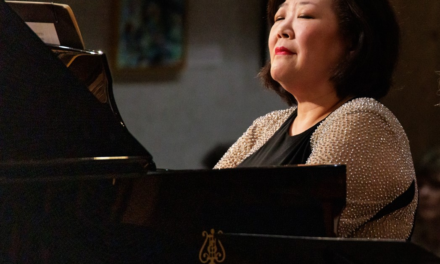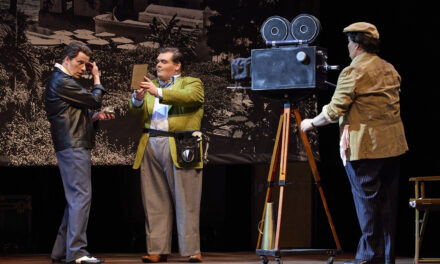The exhibit itself is short and sweet, but each photograph contains a story that can only be told by the beholder
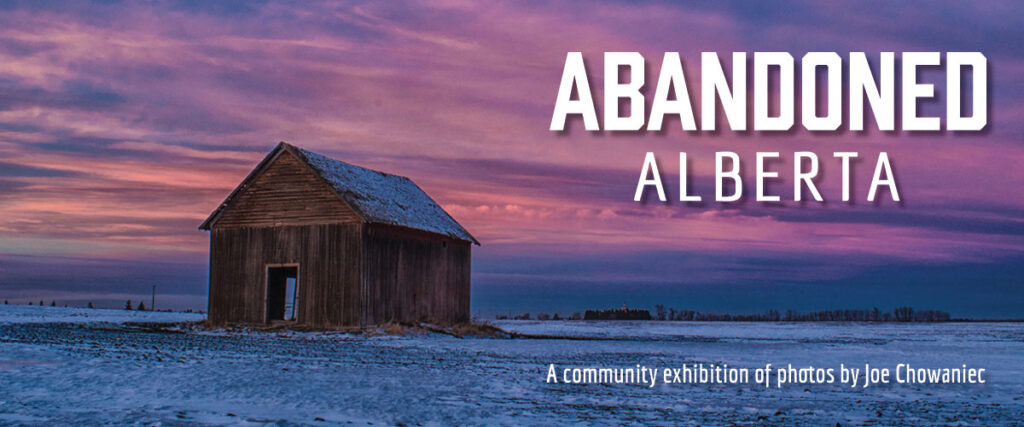
Review by Caelan Scott
Abandoned buildings of all shapes and sizes are littered across Alberta, whether they lie decaying in the rarely visited parts of our cities, or off the highway shoulders. These places are rarely seen other than through our car windows as we pass them by at 100km/h. We barely even notice these building’s presence, much less take them in.
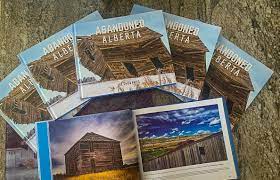
In June, an exhibit opened up at the Royal Alberta Museum that offered a closer look at these abandoned places. Photographs of old churches, schools, and former homes array the walls of the museum’s second-floor lobby. All taken by Joe Chowaniec, whose fascination and admiration for these desolate locales led him on a quest to capture these places, and to compile them in a book called Abandoned Alberta, published in 2020.
Shortly after the book was published, the RAM reached out to both the publisher and Chowaniec so they could create a feature exhibit, an experience that Chowaniec described as, “overwhelming.”
I went to the exhibition with my girlfriend, Jordan, on the 21st of November. We mostly came to see the exhibit, but also to check out the rest of the museum, which we don’t visit very often due to the lack of new exhibits.
We parked down the road, not far away from the museum, though we still had to struggle through the early winter slush to get there. Once we were inside and checked in, we realized we had no idea where the exhibit was, since there was no obvious signage. It wasn’t until we stumbled upon the tucked-away stairs of the gift shop that we realized where the exhibit was.
Upstairs we found a modest gallery of photographs that wrapped around the white walls. Each photograph contained within them some sort of deserted scene, with all the photographs organized in groups of three sharing some kind of common theme. Some of the themes were discarded items, churches, or even broken houses enveloped by beautiful skyscapes lit by sunsets. Some were in bright and vivid colours while others were in a ghostly black and white.
The exhibit itself is short and sweet, but each photograph contains a story that can only be told by the beholder.
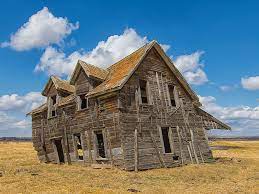
My favourite pieces within the exhibit were the skyscapes and the abandoned vehicles. The former because I admired the contrast of the unpleasing nature of rot and decay against the magnificent expanse of sky that wraps around each building. Some of the houses still had a source of light within them, giving off a chilling ambience, as if these places haven’t been entirely abandoned yet. As for the vehicles, I loved the way the fabric on the seats rotted away to reveal the bare wires beneath, similar to how the flesh of a long-dead animal is slowly picked at until you can see their ivory bones. It reminds me that both vehicles and humans decay in similar ways and even everyday objects die in their own way.
There is a sense of sadness and loss in these photographs, that’s shared by the photographer, who describes his experiences in such locations as: “Sometimes sad, lots of times joy and excitement as I discover something new to me. I am also impressed by the craftsmanship of the buildings. You can tell it was a labour of love for someone.”
These photos serve as much more than decorations, they are also memorials commemorating places that we have left behind, places that we have poured so much love into before circumstances drove us away from them.
Another photo that stuck out to me was a hardware store that had been abandoned since the 70s. Dirt and dust had long since crept into the place, but various things like glue and nails still remained pristine within their packaging. It felt as though whoever owned this place had just got up and left in the middle of a shift. Perhaps post-apocalyptic media has tainted me somewhat, whenever I imagine an abandoned store I always picture it as having been picked clean, leaving only the empty steel shelves behind.
However, exploring these places isn’t all fun and games, and very often each building contains its own dangers. “Hazards are everything from environmental, to lead paint, asbestos, animal droppings, rotting floors, nails, hidden hazardous on the property like wells, and animals of all sorts (skunks, porcupines, coyotes, birds.) In the beginning, I honestly took too many risks and entered properties that I shouldn’t have. Now I mainly do exteriors, unless I am with someone else or a property owner who knows exactly what is on-site,” said Chowaniec.
But perhaps the most captivating part of viewing a place that has been discarded by humans is the mental gap that you as the viewer have to fill in to bring context to somewhere that lacks it. Without context, they are liminal spaces, caught in their transition into something else, and there’s a prevailing feeling as though one shouldn’t be seeing the inside of these ruins.
Because of this lack of context, these places can seem kind of creepy, as if they should have some kind of purpose, yet at the same time lacking it. In my head I made up theories as to what kind of people lived in or visited these places, trying to grasp some form of context to remove these places from their eerie transience.
Jordan and I had fun piecing together the suspected hidden stories within these pictures, even though we both knew that we would never really know them. Photography seems to have a habit of depicting its subjects exactly as they are, adding only in small ways like filters or altering colouration. There was little to really dissect unless we put it there ourselves.
We walked away from the exhibit satisfied, and even if we weren’t so enthusiastic about the rest of the museum, I was happy that I had the opportunity to get out and visit some place that moved me on a deeper level.
I recommend this exhibit to everyone, but especially those who love abandoned places, photography, and anyone else who enjoys the lonely sorrow that arises when facing what we’ve left behind. The exhibit is open from now up until it closes on January 9th. You can see more of Joe Chowaneic’s work on his Facebook page via the link below and you can follow him on Twitter @JoeisCranky.
Abandoned Alberta
Royal Alberta Museum
until January 9, 2022
website
Facebook Link: https://m.facebook.com/JoeChowaniecImages/

